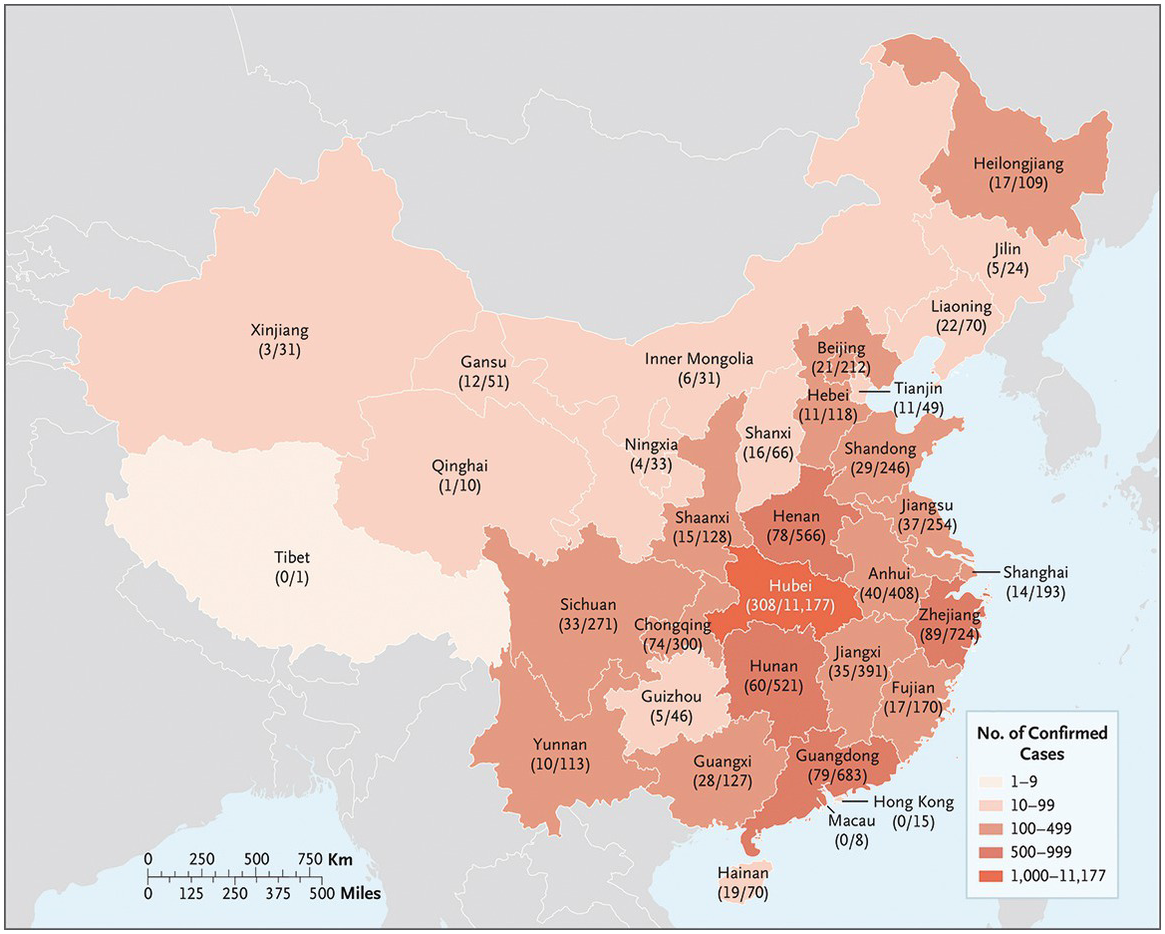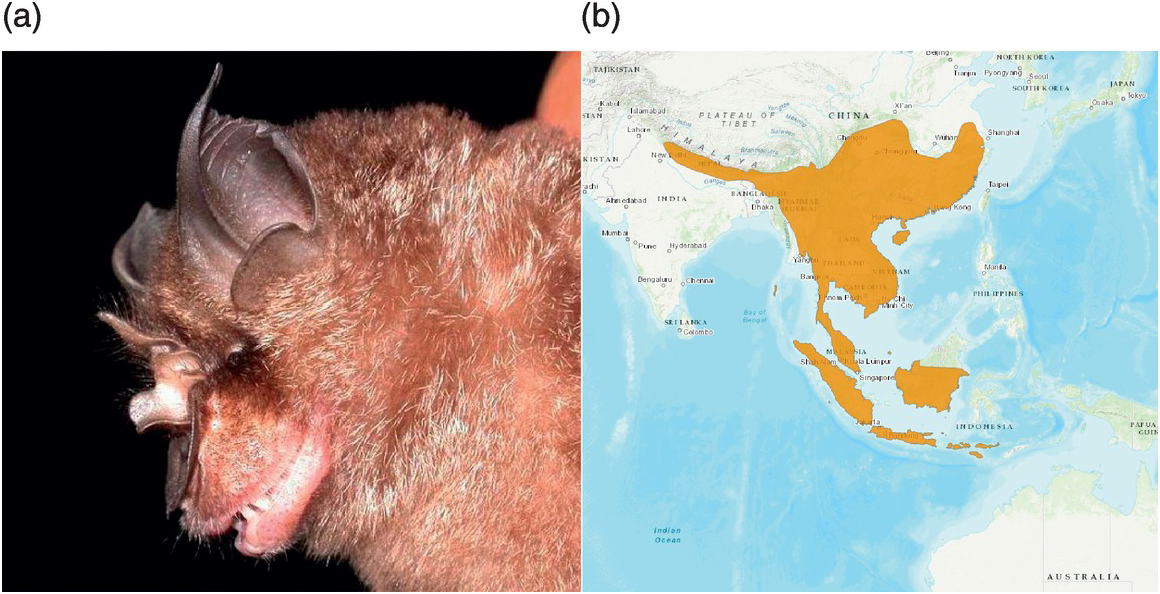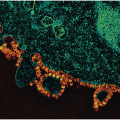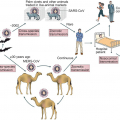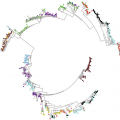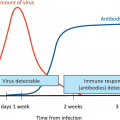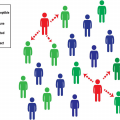Abstract
When the first news of the outbreak of a new coronavirus that caused pneumonia in Wuhan appeared in January 2020, it was unclear what effect the virus would have on the population and economy of the world. Despite the repeated advice of health organizations, the containment measures came too late in many places. As cases and associated deaths crept up in different countries, the global concern changed to anxiety. This anxiety hovered between the uncertainty of bland denials and of grim predictions.
It’s very, very difficult when you have to prepare for something that might not ever happen.
When the first news of the outbreak of a new coronavirus that caused pneumonia in Wuhan appeared in January 2020, it was unclear what effect the virus would have on the population and economy of the world. Despite the repeated advice of health organizations, the containment measures came too late in many places. As cases and associated deaths crept up in different countries, the global concern changed to anxiety. This anxiety hovered between the uncertainty of bland denials and of grim predictions.
In this chapter we will talk about the disease COVID-19 and the virus causing the disease, SARS-CoV-2. I will explain how this virus relates to previously known coronaviruses in humans and other species, recapitulate some of the events in the first month of the then-incipient pandemic, and how the virus spreads and causes disease. I will discuss the morbidity and the mortality of the virus, as well as conditions that worsen disease severity. Finally, I will discuss how this coronavirus spreads and diversifies.
What Is SARS-CoV-2 and What Is COVID-19?
There are three different and related concepts that could result in confusion: the disease, the causative agent of the specific disease, and the species the virus belongs to. The coronavirus disease, or COVID-19, is caused by the severe acute respiratory syndrome coronavirus 2, or SARS-CoV-2. This virus belongs to a viral species, the severe acute respiratory syndrome-related coronaviruses (SARSr-CoV). There are other related viruses within this species.
How are these viruses named? The International Committee on Taxonomy of Viruses (ICTV) is a group of experts who determine how to name and classify viruses based on a series of criteria, including the similarity with other viruses and the hosts they infect. The committee on taxonomy of viruses determined on February 11, 2020 that the new coronavirus responsible for the outbreak in Wuhan in December 2019 belongs to the existing species of SARS-like viruses. This viral species includes the specific coronavirus responsible for the SARS outbreak of 2003, named SARS-CoV. Viral species comprise a group of closely related viruses that often take the name from a founding member – in this case the SARS coronavirus. This similarity is usually based on genomic data: all viruses from SARS-CoV have very closely related genomes. This species of viruses, including SARS-CoV and SARS-CoV-2, belong to the more extensive and more loosely related Coronaviridae family (Table 5.1).
Table 5.1 Three different coronaviruses that cause severe respiratory syndromes. The three viruses belong to the same genus (and family) of Betacoronavirus. SARS-CoV is the infection agent of the severe acute respiratory syndrome (SARS) of 2002–2003; MERS-CoV is the agent responsible of the Middle East respiratory syndrome (MERS) in 2012–2019; and SARS-CoV-2 of COVID-19 in 2019–2020.
| Name of virus | Species | Genus | Family | Name of disease |
|---|---|---|---|---|
| SARS-CoV-2 | Severe acute respiratory syndrome-related coronavirus | Betacoronavirus | Coronaviridae | Coronavirus disease 19 (COVID-19) |
| SARS-CoV | Severe acute respiratory syndrome-related coronavirus | Betacoronavirus | Coronaviridae | Severe acute respiratory syndrome (SARS) |
| MERS-CoV | Middle East respiratory syndrome-related coronavirus | Betacoronavirus | Coronaviridae | Middle East respiratory syndrome (MERS) |
On the same day, February 11, 2020, the World Health Organization (WHO), responsible for the name of the disease, announced that COVID-19 was the name of the disease caused by the SARS-CoV-2 virus. Although the virus is similar to SARS-CoV – the viral agent related to SARS – the WHO thought that both clinical and epidemiological data were distinct from SARS. Therefore, they decided to denote the disease as coronavirus disease 2019, or COVID-19.
Where Was SARS-CoV-2 First Reported?
A cluster of similar cases of pneumonia of unknown origin were reported at the end of December 2019 in Wuhan, the capital of the Hubei province in China. Interestingly, most of the cases were reported in relation to the Huanan Seafood Wholesale Market, a market where a large variety of animals are sold, including live animals. Some of the cases were not related to the market, but were located in close proximity, indicating that an infectious agent could be the cause of the mysterious pneumonias. Tests carried out by health authorities for known pathogens, including known viruses and bacteria, were negative, suggesting that the infectious agent was not known. By mid-January, a new virus was isolated and its genome was sequenced. Based on the genomic information, the virus was found to be a betacoronavirus, related to SARS-CoV, the virus that caused the outbreak of SARS in 2003. In the third week of January, cases of the virus were reported in Thailand and Japan. A week later, on January 23, the Chinese government put the city of Wuhan under lockdown, coinciding with the Chinese New Year, which was followed by further measures in Hubei and the whole of China (Figure 5.1). Meanwhile, the number of reported cases increased around the world, leading to similar outbreaks in Italy, Iran, and Spain by mid-March. On March 11, 2020 the WHO declared a global pandemic.
Figure 5.1 COVID-19 cases in China by February 4, 2020. This map shows for each province in China the number of laboratory-confirmed cases of COVID-19 in the official statistics as of February 4, 2020. The epicenter of the outbreak was in the city of Wuhan, in the province of Hubei. The first cluster of cases of the disease was reported in Wuhan in December 2019. Within a month, cases were reported in all provinces of China. A lockdown in the Hubei province, and public health measures across China, led to an effective reduction of the number of cases and deaths by the end of March 2020. Numbers in the map reflect the number of individuals in the study and the total number of officially reported cases by that date.
Looking at the genomes of the viruses circulating in the first few months, one can estimate when the common ancestor to all circulating SARS-CoV-2 viruses occurred. All genomes are very similar, indicating that there is a single common origin to all SARS-CoV-2 and not multiple introductions. One can also deduce that the origin is very recent, estimated to be in mid-November 2019, close to when the first case was identified at the end of November or beginning of December 2019.
The WHO reports daily on newly diagnosed cases and deaths across different regions in the world.
Where Is It Coming From?
The origin of the viruses is still unclear. SARS-like viruses have been sampled in bats and it seems plausible that the ultimate reservoir is found in bat species. Two different scenarios have been proposed to explain how the virus was able to emerge in humans. The first scenario suggests that there could have been some evolution and adaptation in an animal host before it was able to infect humans. As was observed in SARS, other mammals can be infected with SARS-like coronaviruses that use the same entry mechanisms in the same cell type that the viruses infected in humans. The diversity of coronaviruses in bats and other species has not been fully characterized and it is possible that further analysis in different animal species can identify a potential reservoir for the virus. As mentioned above, the first cases were identified in the Huanan market in Wuhan, where several animal species were sold, including rare live animals. The second scenario suggests that some of the changes in the viral genome that enable rapid transmission happened after the virus started to infect humans. In this possible scenario, undetected human-to-human transmission could have led to the adaptation of the virus. This further adaptation could have triggered the detection associated with the clusters of pneumonia cases in Wuhan.
The animal origin and the natural host of SARS-CoV-2 is currently unknown. The closest virus to SARS-CoV-2 currently reported was sequenced by the Wuhan Institute of Virology, which named it RaTG13. RaTG13 was found in an intermediate horseshoe bat (Rhinolophus affinis) in caves in Yunnan on July 24, 2013. The horseshoe bat is a common bat species in South and Southeast Asia and central China (Figure 5.2(b)).
Figure 5.2 SARS-like viruses are found in animals. Bats have been found to host large numbers of viruses, including SARS-like viruses, suggesting that these animals could be the natural reservoir of these viruses. The diversity of viruses in bats also suggests that bats could be a mixing pot for new genetic combinations. This could explain why viruses found in bats in China are similar to the viruses that caused SARS in 2002–2003 and COVID-19. One of the viruses with the closest genome to SARS-CoV-2 was found in an intermediate horseshoe bat (Rhinolophus affinis) in South China (a). This species of bat is common in South Asia (b). Other kinds of horseshoe bat have been found to have similar viruses. It has been suspected that the viruses found in bats could infect other mammals, which could then infect humans. How the SARS-CoV-2 managed to find its way to humans is still unclear.
Stay updated, free articles. Join our Telegram channel

Full access? Get Clinical Tree



